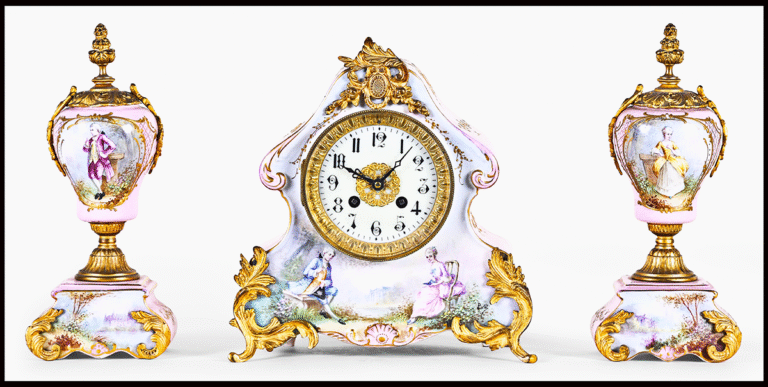An old mantel clock is more than just a timekeeping device—it’s a piece of history, craftsmanship, and timeless elegance. Whether inherited from a grandparent, discovered at an estate sale, or purchased from a collector, an old mantel clock can add depth, character, and warmth to any room. These clocks are not just functional; they are storytellers, each with a unique narrative etched in wood, brass, and glass.
Why People Love Old Mantel Clocks
There’s something captivating about an old mantel clock ticking gently on the fireplace ledge or bookshelf. The rhythmic chime, the patina on the wood, and the intricate details of the face and hands speak to a different era—one where time moved slower and craftsmanship mattered deeply.
Collectors and decorators alike are drawn to antique clocks because of their blend of beauty and utility. Among these, mantel clocks stand out for their compact yet ornate design. Typically shorter and wider than longcase or wall clocks, old mantel clocks were originally designed to sit proudly above a fireplace mantel. Their balanced proportions and decorative flair made them centerpieces of 19th- and early 20th-century homes.
What Makes an Old Mantel Clock Valuable?
The value of an old mantel clock depends on several factors—age, maker, materials, condition, and rarity. Renowned clockmakers such as Seth Thomas, Ansonia, and Gustav Becker produced some of the most sought-after antique mantel clocks during the 1800s and early 1900s. These timepieces often featured hand-carved cases, porcelain dials, and mechanical movements that are still functional over a century later.
When browsing for antique clocks, consider the following:
- Maker’s mark: Look for engravings or labels on the clock movement or case.
- Mechanism type: Mechanical clocks with pendulums or chimes are more desirable.
- Condition: Original finishes and working movements increase value.
- Materials: Solid wood, marble, and bronze elements often signal a higher-end piece.
While not every old mantel clock is worth a fortune, such as a Meissen mantel clock, Dated 1727, with a movement signed Barrey à Paris, each carries intrinsic value for its craftsmanship and historical context.
Decorating with Antique Clocks
Incorporating an antique clock into your décor brings a sense of nostalgia and sophistication. Whether your home is traditional, rustic, or even modern, there’s a mantel clock to match your aesthetic.
For instance:
- A Victorian-era mantel clock with intricate scrollwork pairs well with classic interior themes.
- A simple, Art Deco old mantel clock can complement minimalist or mid-century décor.
- Dark-wood old mantel clocks look stunning against lighter-colored mantels or shelves.
Grouping antique clocks together creates a curated, museum-like feel. Alternatively, a single old mantel clock can serve as a statement piece on a fireplace, sideboard, or even a bedside table.
Caring for Old Mantel Clocks
To ensure your old mantel clock remains in excellent condition for years to come, basic maintenance is essential:
- Keep it clean: Gently dust the case with a soft cloth. Avoid harsh cleaners, especially on wood or gilded surfaces.
- Winding: If the clock is mechanical, wind it regularly, but don’t force the key.
- Lubrication: Every few years, consider having the movement cleaned and oiled by a professional clockmaker.
- Avoid direct sunlight: UV rays can damage the finish and fade the clock face.
Maintaining your mantel clock not only preserves its appearance but also its ability to function as a reliable timekeeper.
The Enduring Appeal of Antique Clocks

In a digital age dominated by smartphones and smartwatches, the charm of an antique clock endures. There’s a certain romance in hearing the gentle tick of a mechanical clock or the soft chime marking the hour. Antique clocks remind us that time is precious—and that beauty doesn’t have to be fleeting.
If you’re looking to start a collection or simply want to add a touch of elegance to your home, consider exploring the world of old mantel clocks. Whether ornate or understated, these classic timepieces have a way of making any space feel lived-in and loved.
From collectors to casual admirers, anyone can appreciate the artistry and function of a finely made mantel clock. So next time you pass by a dusty shelf at an antique store, take a closer look—you might just discover your next heirloom.


